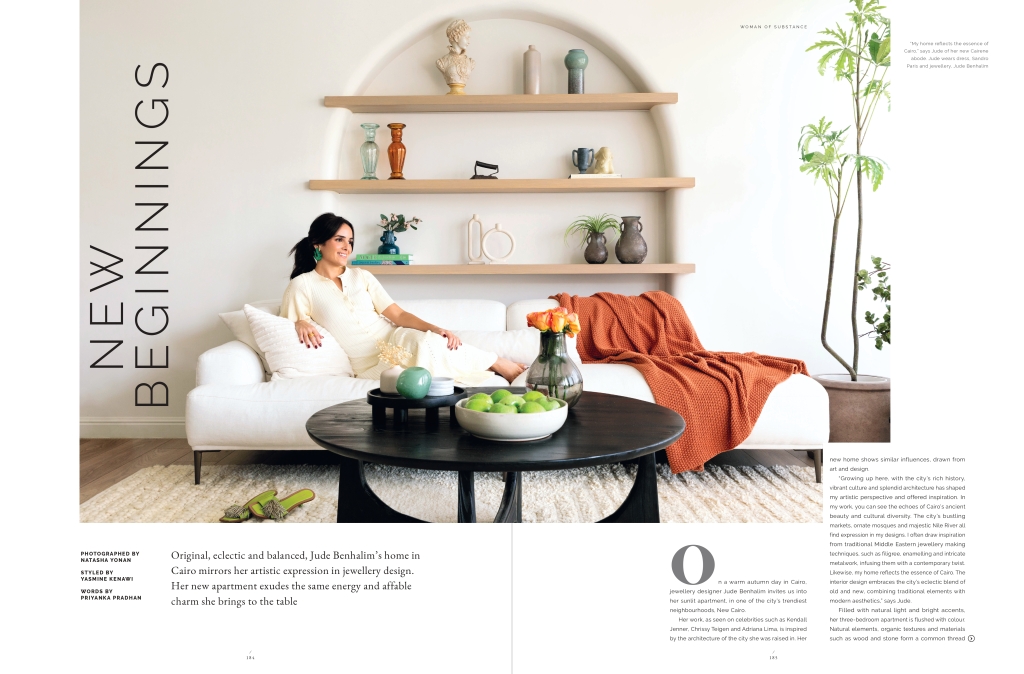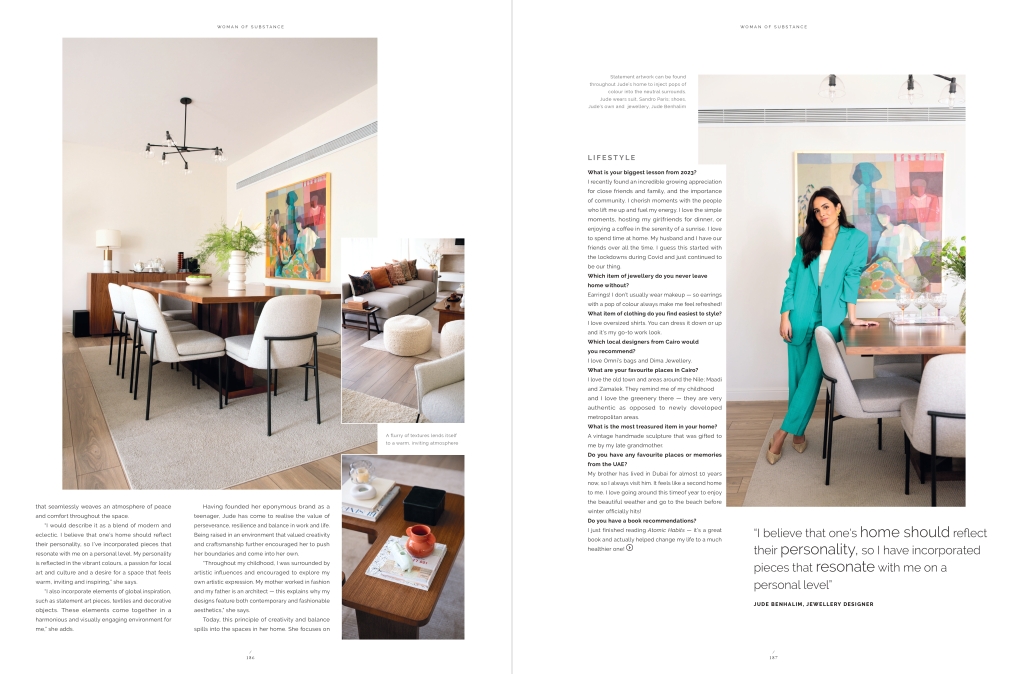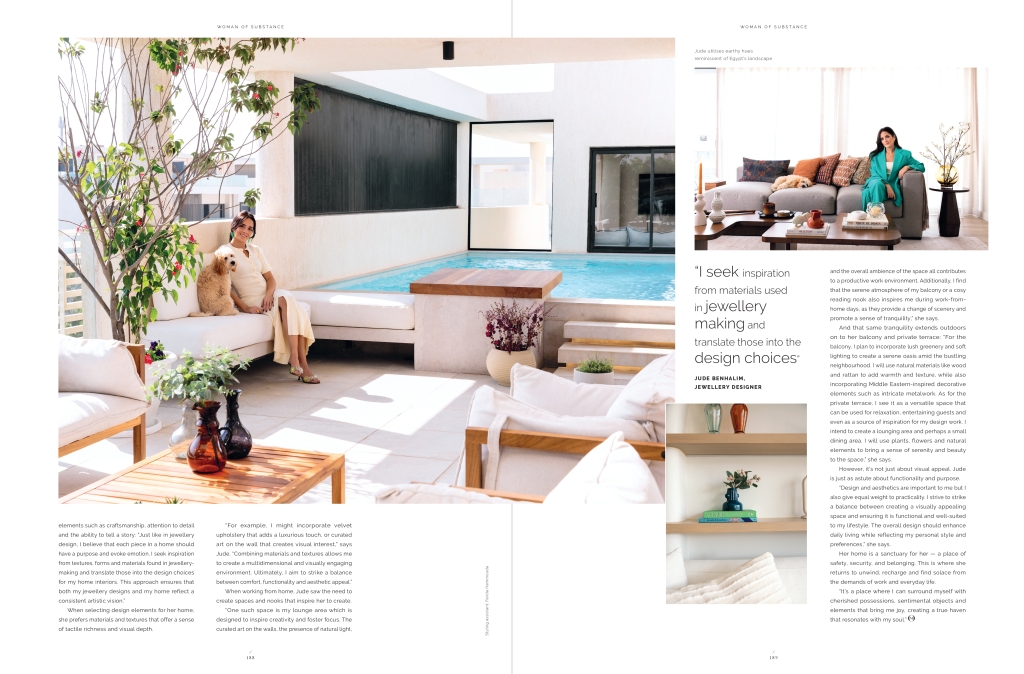Niche perfumers in the Middle East are reinventing themselves to find popularity amongst the cool kids. From the global woke consumer to the curious Gen Z, here’s why everyone wants a hint of this : MOJEH Magazine
Words by Priyanka Pradhan
Photography by Vrushali Chaudhary and Nitin Narendran

Bespoke, culturally- aware and ultra- exclusive fragrances are now in the radar of young perfume wearers. Driven by their need for individuality, young trendsetters and early adopters are finding the appeal in regional niche fragrances. Oman-based luxury niche fragrance house, Amouage, one of the most globally popular brands from the region, emphasizes its uniqueness for young perfume wearers. “I think what contributes most to the momentum is the deep desire of young people to be unique. I think we are in an era where self-expression is extremely important. Young people want to be recognised for who they are, people want others to acknowledge that they’re unique and the belief that diversity should be valued and glorified. From this point of view, the niche perfume is a novel way to express this uniqueness,” says Renaud Salmon, chief creative officer of Oman-based Amouage.
Happy to pay for quality products, very particular about personalization and highly concerned about ethical standards, Gen Z seems to be the perfect match for regional niche perfumers. The ideal consumer for such brands is now between the ages of 16 and 35, considerably younger than traditional niche perfume wearer.


Having borrowed from the art and craft of concocting fragrances of ancient Mesopotamia, Egypt and the Indus valley civilization dating back to more than 4000 years, niche perfumers from the Middle East are loud and proud of their roots. Some of the locally sourced ingredients in niche fragrances from the region include rose water, juniper, frankincense, myrrh, frangipani and saffron, that are often customized and layered according to the whims of the perfume wearer. These superior ingredients coupled with sophisticated techniques and high-end technology drive up prices of niche fragrances.
“Oud, although not specifically from the Arabian Peninsula, is highly coveted and valued as it holds religious as well as cultural significance. Musk from Oman has many health benefits for its aroma and can also be chewed like gum! Rose from the Taif region in Saudi Arabia is one of the highest quality of roses found around the world,” says Talha Kalsekar, founder of niche fragrance house, Maison De Noya.
Niche fragrance brands find the young generation to be more open-minded, more accepting of different cultures and appreciative of local traditions. “The use of trendy aesthetics, sustainability efforts, and influencer collaborations are part of our strategy to capture the attention and loyalty of younger perfume wearers in this region,” says Ahmed Alesry, general manager of niche fragrance house, Oman Luxury.
Gender fluidity in niche fragrances is a big draw for a generation that doesn’t like to conform to the norm and prefers to mix things up. “We personally don’t believe in scents linked to gender – it depends on the mood, the moment and perhaps even the location that you are part of. Each scent smells differently on each person and each individual has their own journey with the scent,” says Forat Al Haider, creative director, Ghawali, niche luxury perfume house by Chalhoub group.

However, it takes a lot more than just a sweet- smelling portion to sell perfume to young fragrance wearers today. Storytelling and sustainability are as important as the scent itself. Armed with rich heritage, encyclopaedic knowledge and ethical practices, niche perfumers come up trumps compared to global luxury fragrance houses.
“I think storytelling is crucial because the perception of perfume is an aesthetic – it’s something you not only enjoy through your nose, but through all your senses. The story is also told through all your senses. Fragrance is meant to evoke emotions and the stories leading to those emotions have to be strong. Fragrances are all about emotions!” says Renaud Salmon.
Anecdotal narratives and that personal touch are also all-important to speak to young perfume wearers. Sheikha Hind Bahwan, founder of fragrance house, OJAR, illustrates the beauty of authentic stories behind fragrances. “My passion for fragrances is a cherished inheritance from my mother. She was an artisan of scents, crafting her own perfumes at home. My earliest and most treasured memories involve joining her in this aromatic art, blending different perfumes together. This experimentation with scents blossomed into a deep-seated passion of mine, forging a special bond between my mother and me. It’s a family tradition that I hold dear and continues to be a significant aspect of my life,” she says.
Collaborations with local artists, performers and photographers are helping the brands connect with contemporary culture, in another form of storytelling. “For our limited-edition launch,’ 9PM in Saudi’ perfume, we had an interesting creative process with various talented Saudi artists such as photographer Designless, 3D artist Amr Khaled and a fashion capsule collection with Proud Angels, to celebrate the mood, vibe and atmosphere of Saudi Arabia,” says Forat Al Haider.

Sustainable practices and ethically sourced natural ingredients, recyclable packaging and mindful production cycles are major factors attracting the ‘woke’ global crowd into the fold. Niche perfumers, by default, produce in smaller numbers and are ethical in their approach to perfume making, which makes them ripe for the new-age consumer.
Global niche fragrance house, Creed Perfumes sees a marked difference in the regional niche perfume world, compared to the rest of the globe. “The Middle East market stands out with its unique characteristics, notably a preference for potent fragrances and the significance placed on personal relationships, a departure from markets like Asia, where customers may lean towards less personal engagement.” says Sarah Rotheram, global CEO of Creed Fragrances.
Despite its unique traits, there are some similarities with consumers worldwide, such as priority on premium quality in fragrances and the increasing prominence of standalone boutiques with VIP rooms & customization elements.
Going forward, the growing awareness of niche perfumery from the region, personal engagement and better visibility will cement their place under both, the local and global spotlight. With the help of slick packaging, stronger branding and an authentic connect with the younger generation, niche perfumery in the Middle East is coming up roses.




